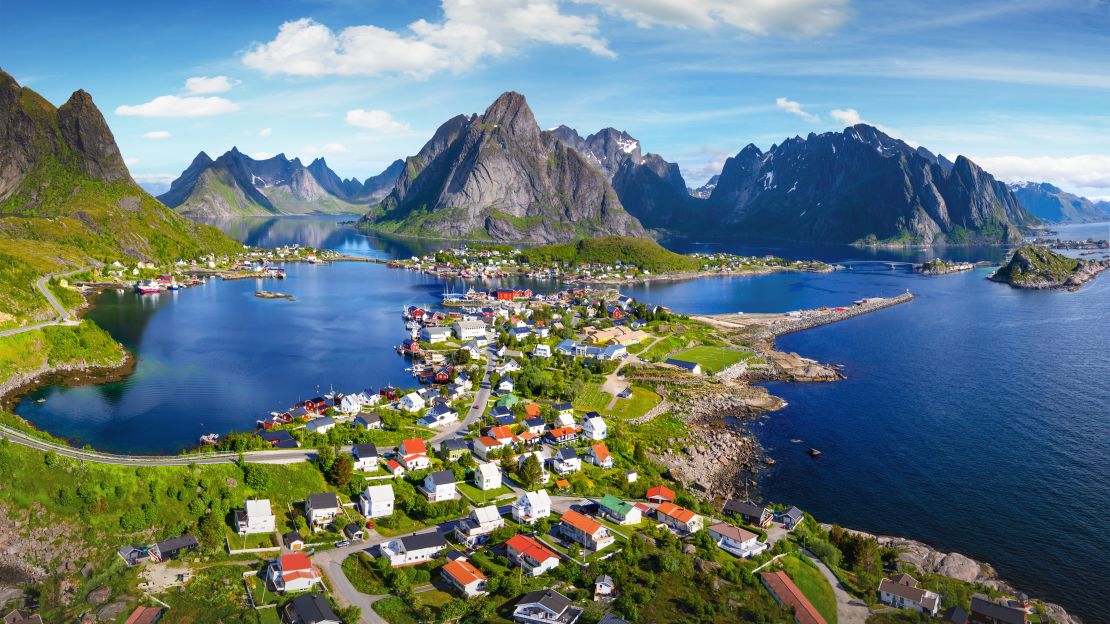While Europe’s major destinations remain eternally appealing, the continent’s most discerning travelers increasingly seek experiences beyond the established luxury circuits. As iconic destinations like St. Tropez, Capri, and Santorini grapple with overtourism, a new category of European havens has emerged—places combining remarkable cultural heritage, exceptional accommodations, and pristine natural beauty without the crowds that diminish exclusivity. This exploration reveals five European destinations that deliver world-class luxury experiences while remaining gloriously under the radar.
1. Comporta, Portugal: Bohemian Sophistication
Location: Alentejo Coast, Portugal (1 hour south of Lisbon)
Best Season: May-June and September-October
Luxury Credentials: Discreet celebrity presence, architectural distinction, minimal development
Just beyond the reach of Lisbon’s day-trippers lies one of Europe’s most perfectly preserved coastal enclaves. Comporta represents the antithesis of the Algarve’s development-heavy approach—a fragile ecosystem of rice fields, cork forests, and 12 miles of immaculate white sand beaches where strict environmental protections have prevented major resort development.
Where to Stay
The region’s accommodation philosophy emphasizes architectural distinction over conventional luxury trappings:
Sublime Comporta
This architectural masterpiece seamlessly integrates with its natural surroundings. The 23 cabana-style rooms and villas feature floor-to-ceiling windows framing views of ancient umbrella pines. The Spa uses locally harvested salt, rice, and botanical ingredients in its treatments, while the garden-to-table restaurant sources 80% of ingredients from on-site organic gardens.
Casa na Areia
Perhaps Portugal’s most distinctive small hotel, this four-bedroom architectural marvel features sand floors throughout common areas, blurring boundaries between indoors and outdoors. The minimalist aesthetic showcases locally crafted furniture against whitewashed walls, while floor-to-ceiling glass maximizes the pastoral rice field views.
Insider Experiences
Beyond beaches, Comporta offers sophisticated cultural immersion:
- Rice Cultivation Heritage: Private tours of traditional rice cultivation areas with rice-focused tasting menus
- Horseback excursions along 12 miles of undeveloped coastline with Lusitano horses
- Artisanal traditions: Private workshops with local craftspeople specializing in traditional Portuguese techniques
- Dolphin observation in the Sado Estuary with marine biologists studying the resident population
Why Now
Comporta represents a rapidly closing window of opportunity—a destination maintaining authentic character despite increasing discovery. Recent infrastructure improvements have enhanced accessibility without compromising the region’s essential character, creating the perfect balance between sophistication and authenticity.
Prestige Note: The area’s dining scene transcends its small size, with Cavalariça (housed in former stables) and Sem Porta offering sophisticated reinterpretations of Portuguese coastal cuisine worth scheduling visits around.
2. Menorca, Spain: Refined Minimalism
Location: Balearic Islands, Spain
Best Season: May-early July and September
Luxury Credentials: UNESCO Biosphere Reserve status, architectural heritage, emerging design scene
While neighboring Mallorca and Ibiza transformed through decades of development, Menorca’s declaration as a UNESCO Biosphere Reserve in 1993 took the island on a dramatically different path. Development restrictions preserved both natural landscapes and architectural heritage, creating what is now the Mediterranean’s most perfectly balanced island—combining pristine beaches, cultural depth, and sophisticated infrastructure without overcrowding.
Where to Stay
Menorca emphasizes adaptive reuse, with historic properties thoughtfully transformed:
Menorca Experimental
This 19th-century finca (farm estate) transformed by Parisian designer Dorothée Meilichzon represents the island’s new luxury paradigm. The 43 rooms and nine private villas feature a modernist interpretation of Mediterranean aesthetics with custom furniture throughout. The property’s 30 hectares include organic gardens supplying the restaurant, extensive walking trails, and a natural swimming pool filtrated by aquatic plants rather than chemicals.
Torralbenc
This meticulously restored farming compound centers around buildings dating to 1867, transformed into 27 whitewashed rooms and cottages with Moorish influences. The property’s 70 acres of agricultural land produce estate wines served at the sophisticated restaurant, where traditional Menorcan recipes receive contemporary reinterpretation using hyper-local ingredients.
Insider Experiences
Menorca offers remarkable cultural depth beyond its beaches:
- Prehistoric exploration: Private archaeologist-led tours of the island’s 1,500 megalithic sites
- Artisanal footwear: Custom avarca sandal making with the last traditional manufacturers
- Culinary identity: Cheese-making workshops highlighting Mahón-Menorca DOP processes
- Maritime traditions: Private sailing excursions to otherwise inaccessible coves with marine reserve access
Why Now
Menorca has reached a perfect equilibrium—sophisticated enough to satisfy luxury travelers without sacrificing authenticity. The island’s commitment to sustainable development ensures its character will remain intact despite growing recognition.
Prestige Note: Time visits to experience the Camí de Cavalls, a recently restored 13th-century bridle path circumnavigating the entire island, offering access to remote beaches and dramatic viewpoints inaccessible by car.
3. Sveti Stefan, Montenegro: Adriatic Exclusivity
Location: Montenegro’s Budva Riviera
Best Season: June and September
Luxury Credentials: Architectural preservation, limited access, historical significance
This fortified island village dating to the 15th century represents one of the Adriatic’s most visually striking locales—a medieval settlement occupying an entire islet connected to the mainland by a narrow isthmus. Once a fishing community, the entire village underwent a comprehensive preservation-focused transformation into an exclusive retreat combining historical authenticity with contemporary luxury.
Where to Stay
Aman Sveti Stefan
The entire fortified island operates as an Aman resort—50 rooms, cottages, and suites adapted from original village houses with stone walls, hand-rendered stucco, and local oak floors preserved throughout. The conversion maintained the village’s atmospheric narrow lanes and intimate piazzas while incorporating sophisticated amenities with extraordinary discretion. Three pink sand beaches—including the legendary Queen’s Beach where Elizabeth Taylor and Richard Burton retreated from paparazzi—offer different atmospheres for waterfront relaxation.
Villa Miločer
On the mainland portion of the property, this former royal summer residence surrounded by 800-year-old olive trees offers an alternative atmosphere. Eight spacious suites feature floor-to-ceiling windows overlooking the Adriatic, while the grounds encompass protected forests and meticulously maintained gardens.
Insider Experiences
Beyond extraordinary accommodation, the region offers remarkable activities:
- Culinary immersion: Personalized exploration of Montenegro’s cuisine through olive harvesting, fishing expeditions, and mountain foraging with the resort’s chefs
- Historic monasteries: Private access to Orthodox monasteries typically closed to visitors, including candlelit manuscript viewings
- Lake Skadar excursions: Birdwatching with ornithologists in Europe’s largest bird reserve
- Vineyard discovery: Access to small-production wineries cultivating indigenous varietals like Vranac and Krstač
Why Now
Montenegro’s infrastructure improvements have enhanced accessibility while strict development controls preserve the country’s unspoiled character. The destination offers a glimpse of the Mediterranean as it was decades ago, yet with sophisticated service comparable to more established luxury destinations.
Prestige Note: The property’s Villa Miločer provides the most exclusive accommodation option, with a private standalone villa featuring dedicated staff, creating a true residence experience rather than a hotel stay.
4. Saaremaa, Estonia: Baltic Sophistication
Location: Estonia’s largest island in the Baltic Sea
Best Season: June-August and December-February for winter experiences
Luxury Credentials: Wellness heritage, pristine environment, architectural distinction
Estonia’s largest island represents Northern Europe’s best-kept secret—a remarkable destination combining medieval heritage, extraordinary wildlife habitats, and world-class wellness facilities emerging from the island’s Soviet-era spa heritage. Saaremaa’s 2,673 square kilometers encompass ancient meteor craters, pristine forests, coastal cliffs, and traditional villages seemingly untouched by contemporary development.
Where to Stay
The island’s accommodations blend distinctive regional architecture with contemporary Nordic design:
Pädaste Manor
This 15th-century manor house on the smaller neighboring island of Muhu represents the Baltic’s most sophisticated small hotel. The meticulously restored property features 24 individually designed rooms and suites combining period details with contemporary comforts. The extraordinary restaurant Alexander applies Nordic techniques to hyperlocal island ingredients, including herbs from the manor’s gardens and juniper-smoked local fish.
Saaremaa Spa Hotel Georg Ots
For a different experience, this architectural landmark demonstrates Estonia’s extraordinary design vision. The modernist structure incorporates rolling green roofs that merge with surrounding topography while floor-to-ceiling glass frames views of the medieval Episcopal Castle. The spa specializes in traditional Estonian treatments using local mud, pine extracts, and sea minerals.
Insider Experiences
Saaremaa offers activities spanning cultural heritage to natural phenomena:
- Traditional smoke sauna rituals guided by sauna masters using juniper branches and local honey
- Meteorite crater exploration with geologists at Kaali crater field, site of a Bronze Age impact
- Medieval architectural tours focusing on Estonia’s unique hybrid architectural traditions
- Bog walking expeditions across ancient wetland ecosystems with specialized guides
Why Now
Estonia’s sophisticated digital infrastructure and natural environment create an exceptional combination—pristine wilderness coupled with world-class connectivity. The country’s innovative approach to tourism development emphasizes quality over quantity, creating authentic experiences that remain refreshingly uncrowded.
Prestige Note: Timing visits for the summer solstice period (June 20-24) provides the extraordinary experience of near-continuous daylight, when traditional midsummer celebrations feature ancient pagan traditions and contemporary festivities.
5. Apulia, Italy: Authentic Languor
Location: The “heel” of Italy’s boot
Best Season: May-June and September-October
Luxury Credentials: Architectural uniqueness, culinary distinction, agricultural heritage
While Tuscany and the Amalfi Coast dominate Italy’s luxury landscape, sophisticated travelers increasingly discover Puglia’s extraordinary combination of distinctive architecture, remarkable cuisine, and authentic cultural experiences. The region’s defining characteristics—whitewashed hilltop towns, ancient olive groves, and the conical trulli structures—create a landscape unlike anywhere else in Italy.
Where to Stay
Puglia’s accommodation highlights emphasize architectural heritage:
Borgo Egnazia
This extraordinary property recreates a traditional Puglian village (borgo) with obsessive attention to architectural authenticity. The 183 rooms, suites and villas occupy various structures throughout the “village,” featuring vaulted limestone ceilings, local stone floors, and handcrafted furnishings from regional artisans. The property’s Vair Spa specializes in treatments incorporating regional ingredients like olive oil, almond milk, and Adriatic sea salt.
Masseria San Domenico
This 15th-century watchtower transformed into a sophisticated retreat sits among ancient olive groves, some trees dating over 2,000 years. The 40 rooms and suites feature limestone walls, vaulted ceilings, and handcrafted regional furniture. The property’s thalassotherapy spa uses seawater drawn from private wells in treatments focused on anti-inflammatory benefits.
Insider Experiences
Beyond beaches, Puglia offers remarkable cultural immersion:
- Olive oil immersion: Private tastings with producers maintaining groves with millennium-old trees
- Traditional craftsmanship: Workshops with papier-mâché masters preserving Lecce’s baroque traditions
- Architectural exploration: Private access to palazzi typically closed to the public with resident nobility
- Culinary heritage: Home dining experiences with families maintaining traditional recipes across generations
Why Now
Puglia has achieved perfect equilibrium—sophisticated infrastructure for luxury travelers without compromising authentic character. The region’s agricultural focus ensures visitors experience living traditions rather than staged cultural performances.
Prestige Note: The region between Bari and Brindisi contains the highest concentration of exceptional properties and experiences, ideal as a base for regional exploration.
Beyond Destinations: The New Luxury Travel Paradigm
These destinations represent a broader shift in luxury travel philosophy—emphasizing authentic experiences, environmental consciousness, and cultural immersion over traditional status symbols. Several principles define this emerging approach:
Architecture as Heritage Preservation
The most compelling properties share a commitment to authentic structural preservation rather than generic luxury aesthetics. Historic buildings thoughtfully adapted to contemporary use maintain cultural connections while providing distinctive experiences impossible in purpose-built resorts.
Hyperlocal Culinary Focus
Destination dining increasingly emphasizes extreme locality—ingredients sourced within the property’s immediate environment rather than imported luxury standards. This approach delivers more authentic flavor expressions while supporting sustainable agricultural practices and local food systems.
Regenerative Tourism Approaches
Beyond sustainability, leading properties embrace regenerative practices that improve local environments and communities. From habitat restoration to cultural heritage preservation, these initiatives ensure tourism enhances rather than depletes destination resources.
Multi-Generational Appeal
These destinations transcend demographic categorization, offering experiences appealing across age groups. Their authentic character engages both younger travelers seeking meaning beyond consumption and mature visitors appreciating historical continuity and cultural depth.
The Value of Discovery
What ultimately distinguishes these destinations is the authenticity of discovery—the opportunity to experience exceptional places before they become incorporated into standardized luxury circuits. While offering sophisticated accommodations and services comparable to established luxury destinations, these locations retain distinctive character and human-scale interactions increasingly rare in premium travel.
For the truly discerning traveler, these hidden gems represent luxury’s highest expression—experiences that cannot simply be purchased but must be thoughtfully discovered, places where extraordinary natural and cultural heritage remains accessible without the compromises that mass tourism inevitably imposes.




